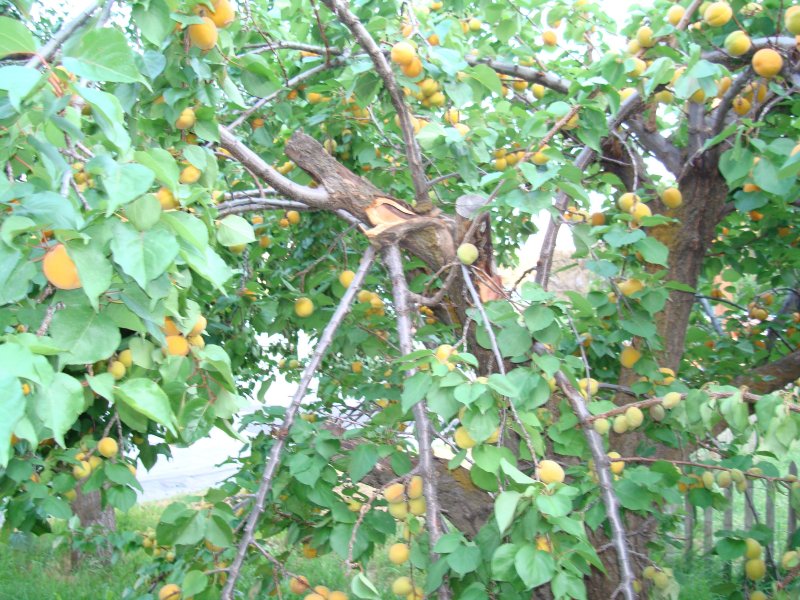
Apricots
by
Barry Carter
When
ORMUS is applied to older trees, their limbs may not have developed
the strength to support the extra weight of the fruit or nuts that
they produce. This was apparent in the summer of 2008 when an older
apricot tree had a particularly abundant crop of apricots after being
given sea water precipitate ORMUS for only the previous four years of
it's twenty plus year life. Here is a closeup image of the broken
branches of this apricot tree taken on August 9, 2008:
Here
is an overview of the entire tree taken on the same day:
Notice
the dog across the fence in the lower right corner of the picture
above? This is one of the dogs that guards my neighbor's apricot
tree. Their tree did not have as many apricots on it as my tree did.
Here is a picture of my neighbor's tree taken on July 27, 2008:
One
reason that their tree did not have as many apricots may be that my
guard cats did a better job of keeping squirrels from stealing the
apricots than their guard dogs did. In the lower right picture below
you can see one of my guard cats:
Here
is another picture of them guarding the apricot tree in 2007:
Though
he looks quite peaceful in the picture above I recently got a video
of the smaller guard cat attacking the dogs across the fence. I am
not sure that this is related to ORMUS even though I do put the
Sea-Crop in the
cat's water.
In the closeup below is a picture of my
neighbor's tree taken on July 27, 2008; you can see how sparse their
apricots were:
I
also have a closeup photo of the apricots on one branch of my tree.
This photo was taken on August 9, 2008:
I
don't think that the squirrels, cats and dogs are entirely
responsible for the difference in the weight of the branches between
my tree and my neighbor's tree, though. In the months before the
apricots ripened on both trees, I took periodic pictures of several
representative apricots picked from the north side of each tree.
Three of these pictures are below:
The grid on the background is half inch square.
As
you can see, the apricots from my tree have been consistently larger
throughout their growing cycle.
Summary
Though
all of the plant stories above suggest major improvements when sea
water ORMUS is added to the soil, this evidence cannot truly be truly
called scientific. In each case at least one component of the
scientific process is missing. The apricot results may be due to
different species of tree since I do not know that these trees came
from the same source. These results may have been skewed by the
squirrels or the positions of the respective trees in relation to
sunlight.
We don't know for sure if the different squash
plants are the same species and they were grown across the continent
from each other. The plants in North Carolina were not even
measured.
The before and after pictures of the cilantro and
dill are from different years. Also, I am not really sure that they
don't typically reach heights greater than they did in my
garden.
The same is true for the lettuce heights. I am not
sure what others are getting with these plant breeds.
I
do know that there are taller sunflower plants with larger sunflowers
but I am not sure how the breed of sunflower I have compares to the
breeds that get the largest.
All of these issues and more need
to be accounted for in controlled scientific research.
I do
know that the food from my garden and trees sure tastes good. I also
know that I feel really good after I eat it.